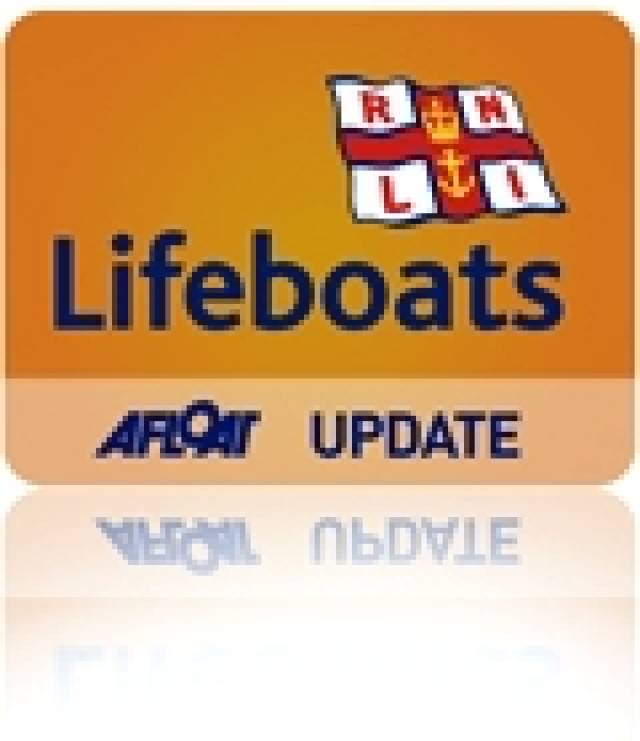A yacht in distress 28 miles South West of Baltimore called for assistance in the early hours of this morning. The 36ft yacht had left the Azores 11 days previously heading for Kinsale with two Danish men on board in their mid- to late sixties. The all weather lifeboat Hilda Jarrett, was launched at 02:10 in gale force weather conditions with a 3-4 metre swell from the South East
Radio contact was established within half an hour. The yacht was in serious peril. Her engines were disabled, one of the crew was suffering from prolonged sea-sickness since leaving the Azores and the remaining crew had not slept in 48 hours.
The yacht was sailing North under reefed mainsail using self steering gear. It was impractical to tow the yacht back into the wind, In the light of day, Coxswain Eoin Ryan, skillfully maneuvered, the 47ft lifeboat alongside the yacht, to allow the safe transfer of Mechanic Cathal Cotrell who had bravely volunteered to go onboard. Cathal who is an experienced sailor was able to take control of the yacht.
Meanwhile the coastguard had mobilized Castletownbere lifeboat which arrived on scene at 5:15 approx and established a tow with the yacht. The yacht was towed to safety with Cathal Cottrel at the helm of the yacht, arriving in Castletownbere at 08:00. One of the men received medical attention locally on arrival.
Baltimore lifeboat made the 20 mile passage to Baltimore arriving back on station at 8:30
Cox Eoin Ryan, Mechanic: Cathal Cotreel, Crew: Gerry Smith, Colin Whooley, Sean McCarthy, Brian McSweeney.
Micheal Cottrel, Vincent Roantree, Donal O'Donovan and Jason Pavry provided shore support .































































